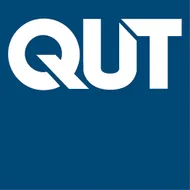Promoting Resilience in Higher Education
The Dispositions for Effective Teaching Framework
Our Dispositions for Effective Teaching Framework (Figure 1 below), which is inspired by the work of Perkins (1995)[1] and Ritchhart (2002)[2] and draws upon the research of Entwistle (2009[3], 2012[4]) attempts to capture key thinking dispositions that we contend are essential for teachers ongoing professional learning, students’ learning in classrooms, and for effective learning in higher education contexts. The framework, and the descriptors we have developed for each disposition, creates a shared vocabulary related to thinking.
The dispositions underpin the development of professional learning activities set on-site in our partner schools. They enable us to make thinking visible through documentation and inform strategies for learning, feedback and assessment.
- Dispositions for Effective Teaching
- Understand
- Demonstrate
- Document
- Receive Feedback
- Enhance
- People Centred
- Caring
- Communicative
- Collaborator
- Critically Attentive
- Observant
- Questioning
- Curious
- Reflective
- Metacognitive
- Self-directed
- Ethical
- Creative
- Open
- Imaginative
- Problem Solver
- Strategic
- Organised
- Data Wise
- Responsive
Download the Dispositions and Descriptors (435Kb)
- Entwistle, N. (2009). Teaching for understanding at university: Deep approaches and distinctive ways of thinking. Basingstoke and New York: Palgrave Macmillan.
- Entwistle, N. (2012). The quality of learning at university: Integrative understanding and distinctive ways of thinking. In J.R. Kirby & M. J. Lawson (Eds). Enhancing the quality of learning. New York: Cambridge University Press.
- Perkins, D. N. (1995). Outsmarting IQ. New York: Free Press.
- Ritchhart, R. (2002). Intellectual character: What it is, why it matters, and how to get it. San Francisco: Jossey-Bass.








